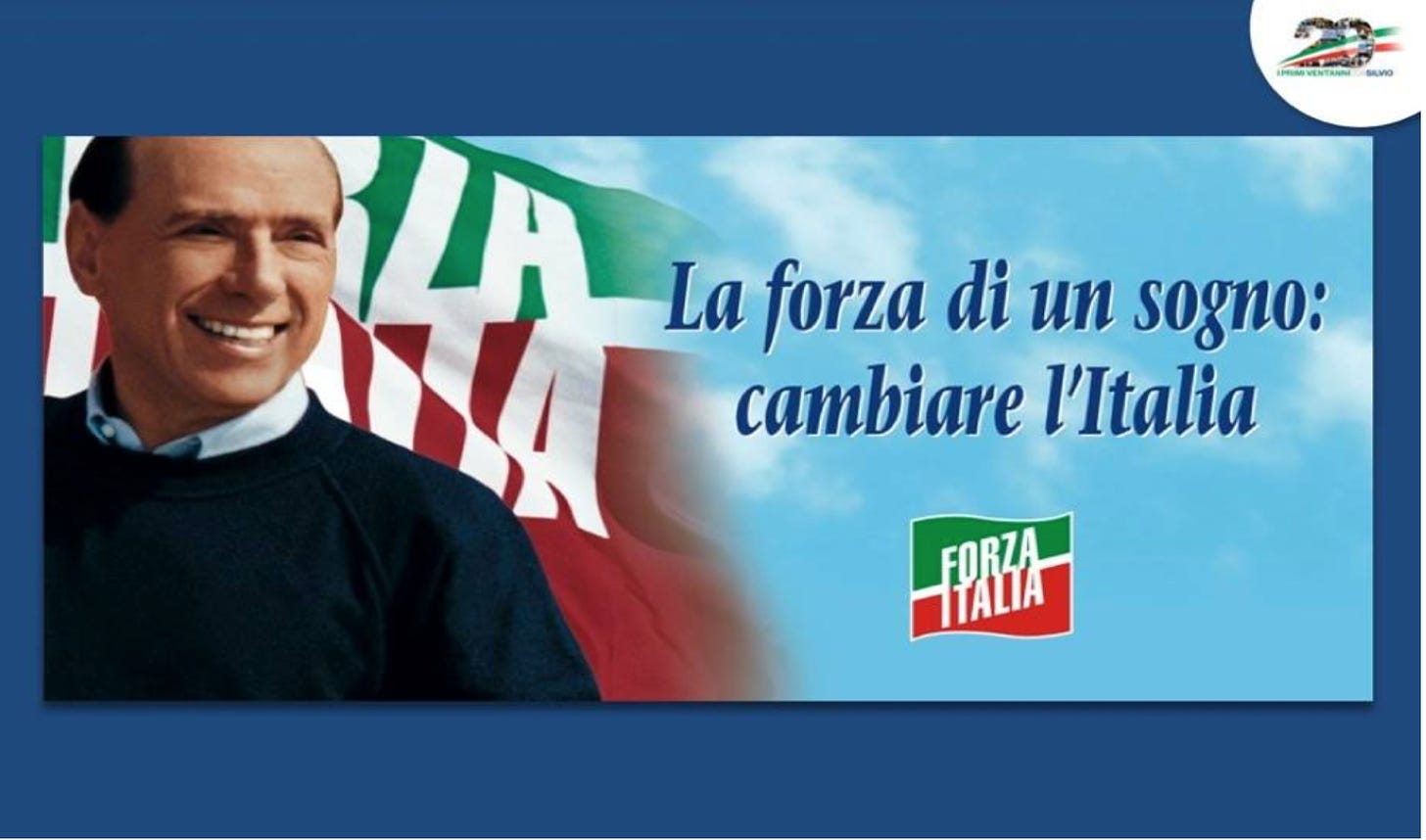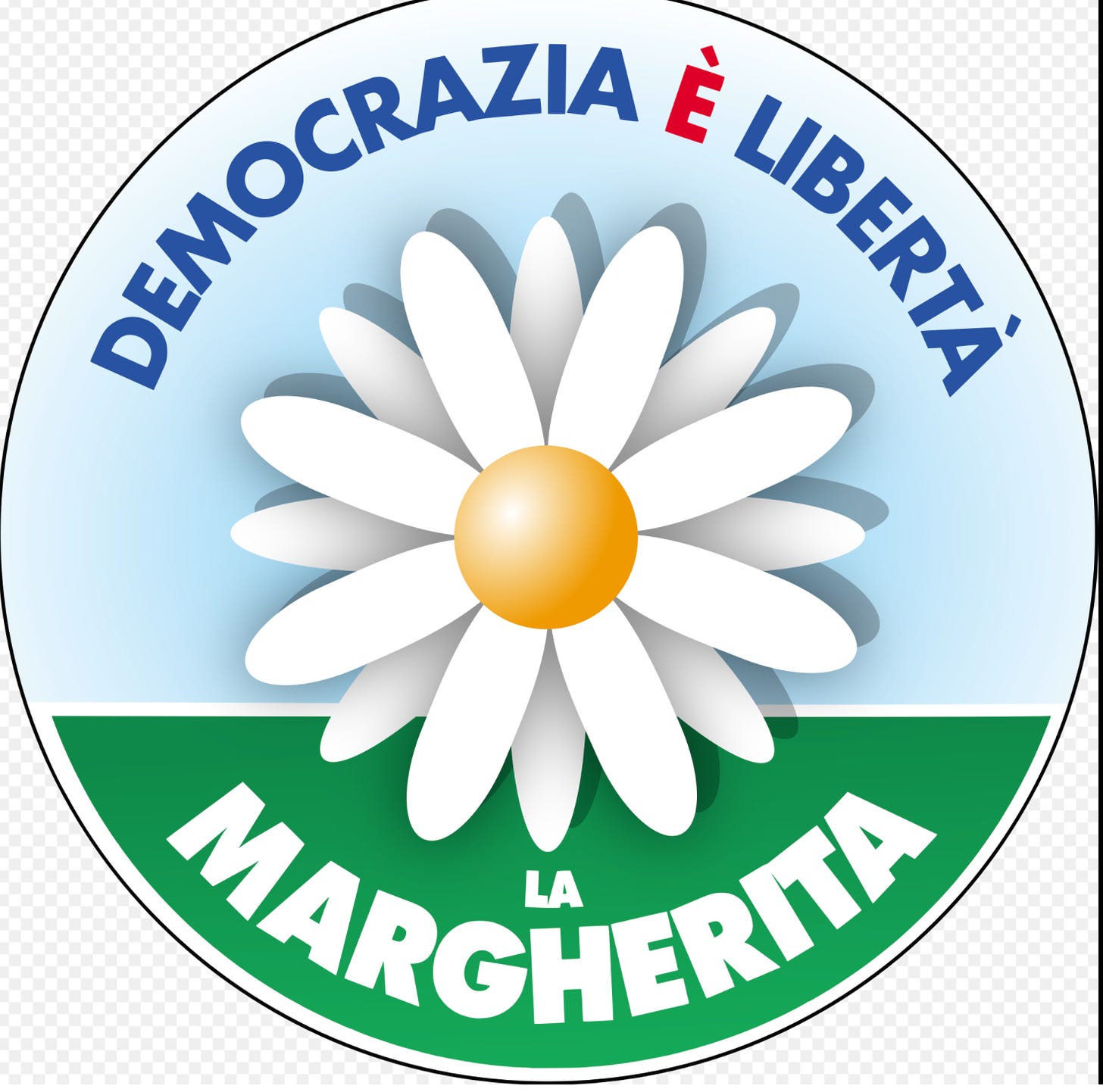In the early 2000s, I arrived in Rome to do research at the Vatican Secret Archives. As I rode from the airport into the city, three political posters caught my eye from the taxi window. The perma-tanned face of then-Prime Minister Silvio Berlusconi, head of Forza Italia (a party named for a soccer slogan, with a symbol adapted from the Italian flag), beamed at me.

Next to him, the tricolor flame of his right-wing partners, the National Alliance, channeled the fascist brand of patriotism.

The third poster, from the “Margherita -- Democracy Is Freedom” center-left opposition party, was harder to decipher. It featured a daisy (margherita means daisy in Italian) and a sky-blue and grass-green palette. What did that daisy stand for? Peace and hope, probably -- important values to uphold in a country where the political extremes have had an appeal (two decades of Fascist dictatorship and the largest Communist party in postwar Western Europe). Yet it looked ... insipid. No wonder the center-left is in trouble, I thought, as the taxi moved on.
That moment presaged our own times. Liberal democracy, now on the defensive against charismatic authoritarians and a booming far right, lacks a clear visual identity, even though the stakes of the image wars are higher than ever. Young people, who from Russia to America are autocracy’s most vocal antagonists, think visually. TikTok and Instagram have fueled a collective pivot to communicating through visual means. Emojis dominate in many “text” messages, posts with images do better on legacy platforms such as Facebook, and video prevails in campaign advertisements and messages from political action groups.
“Most people engage with politics primarily with their eyes,” writes Jeffrey Edward Green in Eyes of the People, arguing that spectatorship has become a consuming political activity. This is all the truer in illiberal states, where a politics of spectacle, centered around the leader as a visual icon, has long triumphed. In Soviet Russia, Fascist Italy, and Nazi Germany, images were central to propaganda designed not just to communicate ideas but also spark deep emotional responses that would spur action. A Communist film (The Battleship Potemkin, Sergei Eisenstein, 1925), and a fascist documentary (The Triumph of the Will, Leni Riefenstahl, 1935), still hold influence as examples of making political arguments through images.
Today it’s mainly the global right, rather than liberal democracy, that invests heavily in visual messaging as a means of political warfare and cultural transformation. Narendra Modi and Vladimir Putin are skillful performers who understand the power and mediagenic value of images and symbols (religious and secular) to build community. Trump's red MAGA hats instantly telegraphed a set of values, starting with devotion to the leader, and marked followers as proud members of a tribe.
Liberal democrats’ attachment to governance founded on reason, and suspicion of the politics of raw emotion, have contributed to this situation. Democratic icons like France’s Marianne and the French-designed American Statue of Liberty, which reflect harmonious classical aesthetics, can stir hearts and instill pride. Yet they don’t have the visceral impact of the swastika (still entrancing neo-Nazis around the world) and the hammer and sickle.
That’s not surprising, given that consensus governance and electoral politics require communications that inform, not inflame, the better to cultivate discernment and debate and promote equity and collaboration. The flag of the European Union, with its egalitarian circle of stars, could not be more at odds with the hierarchical authoritarian mentality and its shock-effect graphics.
In the United States, Republicans have in recent decades been more hard-hitting than Democrats in terms of producing communications that pack an emotional punch. Many turn up their noses up at Fox News’s aggressive visuals, from the shouting chyrons to the lurid on-screen graphics. That may be short-sighted, given how effective the network has been at identifying its target audience and keeping it in a state of agitation. Fox News journalists have been unabashed practitioners of disinformation and advocates for illiberal politics. The defenders of democracy have not upheld their own values with equal vigor.
With our freedoms threatened, that situation can’t stand. We need to renew the image bank of democracy. The wave of political non-fiction filmmaking that started during the Trump presidency is a hopeful sign. Eleven Films, the Lincoln Project, Vote Vets, and many others produce hard-hitting ads and documentary shorts. Strike, a political action committee formed in November 2020 to "modernize" Democratic messaging, wants to “flip the script” and use the Republican playbook, heavy on images that elicit emotional reactions, for Democratic electoral ends.
Yet we need to go further. We can draw on the inspirational image archive of the civil rights movement and translate its stirring oratory into visual terms. Today, having a strong and emotionally resonant visual identity is essential to attracting voters, especially younger ones who respond more to images than to text.
Just ask the Italian center-left. When the Margherita party merged with another entity in 2007 to create the Democratic Party, the daisy symbol was retired. The logo that replaced it kept the association with peace and hope by integrating an olive branch, but took a cue from the center-right parties, appealing to patriotism by using the colors of the Italian flag.
As the crisis of democracy deepens in America, visual communication will take on even more importance. We will need to channel the unique power of images to allow us to feel and dream and inspire us to take action as we build a pro-democracy movement for our country.







Another great piece Ruth, thanks. This is an insightful reminder that the battle for ideas and liberal democracy must include the (visual realm) in all its manifestations to communicate with voters and citizenry. As you point out, liberal democratic groups are stepping up their game in order to compete with their often more aggressive illiberal opponents.
As we celebrate Memorial day and look towards the 4th of July, I'm reminded of Trump just a couple of years ago when he tried to order a military parade for himself on the 4th of July. Like other strongmen, he instinctively understands the power and strength that such a spectacle conveys about one leader sitting before the marching throngs of soldiers and armaments as the jets fly over in formation.
But the generals to their great credit who rejected his request, (was it Mark Milley at the time) also understood that power in this country does not reside in one man alone like it does in a dictatorship. They understood that an (image) of an autocrat surrounded by a military style parade is not only a danger to freedom but an abhorrence to our democratic values and must never be allowed to happen in America.
This is fascinating, Ruth. As I examined the images you provided, I was checking in on my own emotional reaction to the photo, colors and symbols.
Classes on Media Literacy should be taught in all schools - (and there should be lots of opportunities for adults to learn why and how they react to visual messaging, and, propaganda). All of us are vulnerable to the pull on our emotions - as information is flashing at us all day long in all kinds of ways.
How to stop, pause and discern is a taught skill.